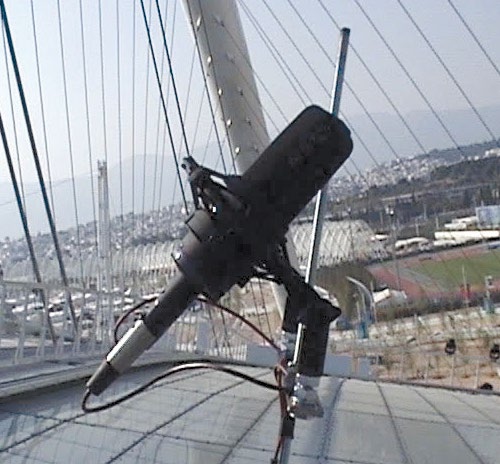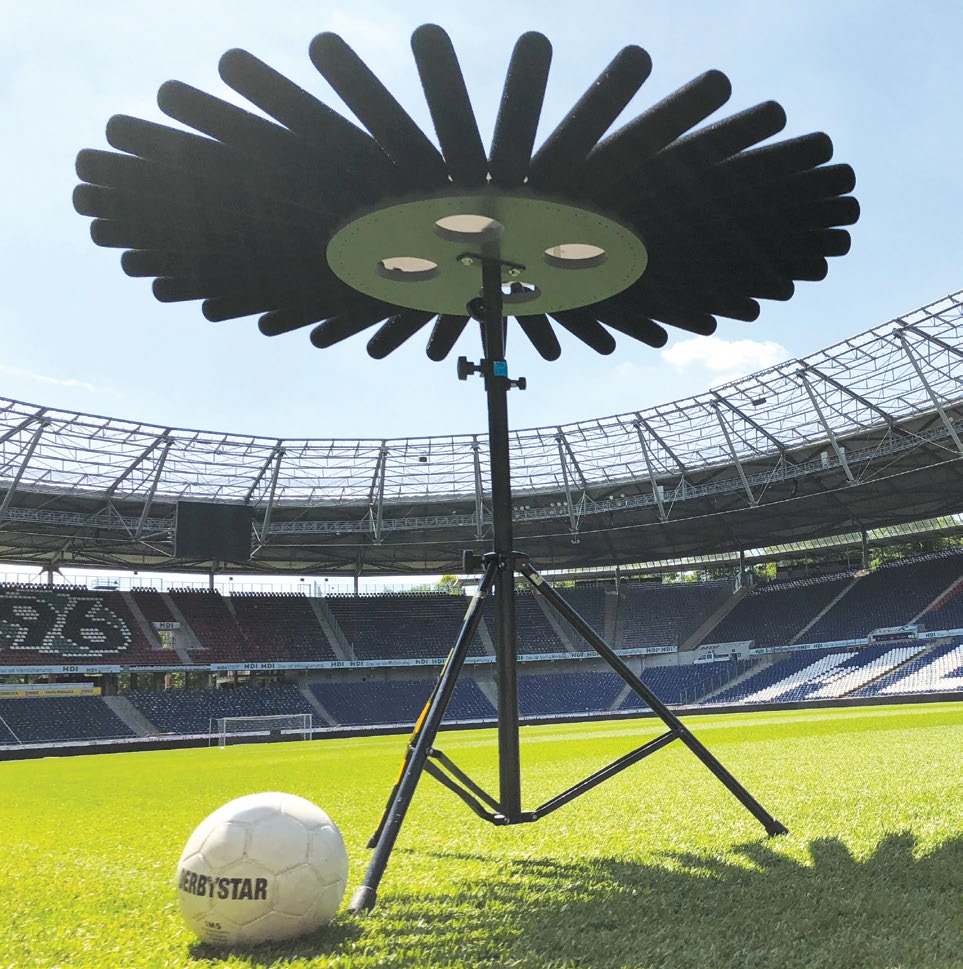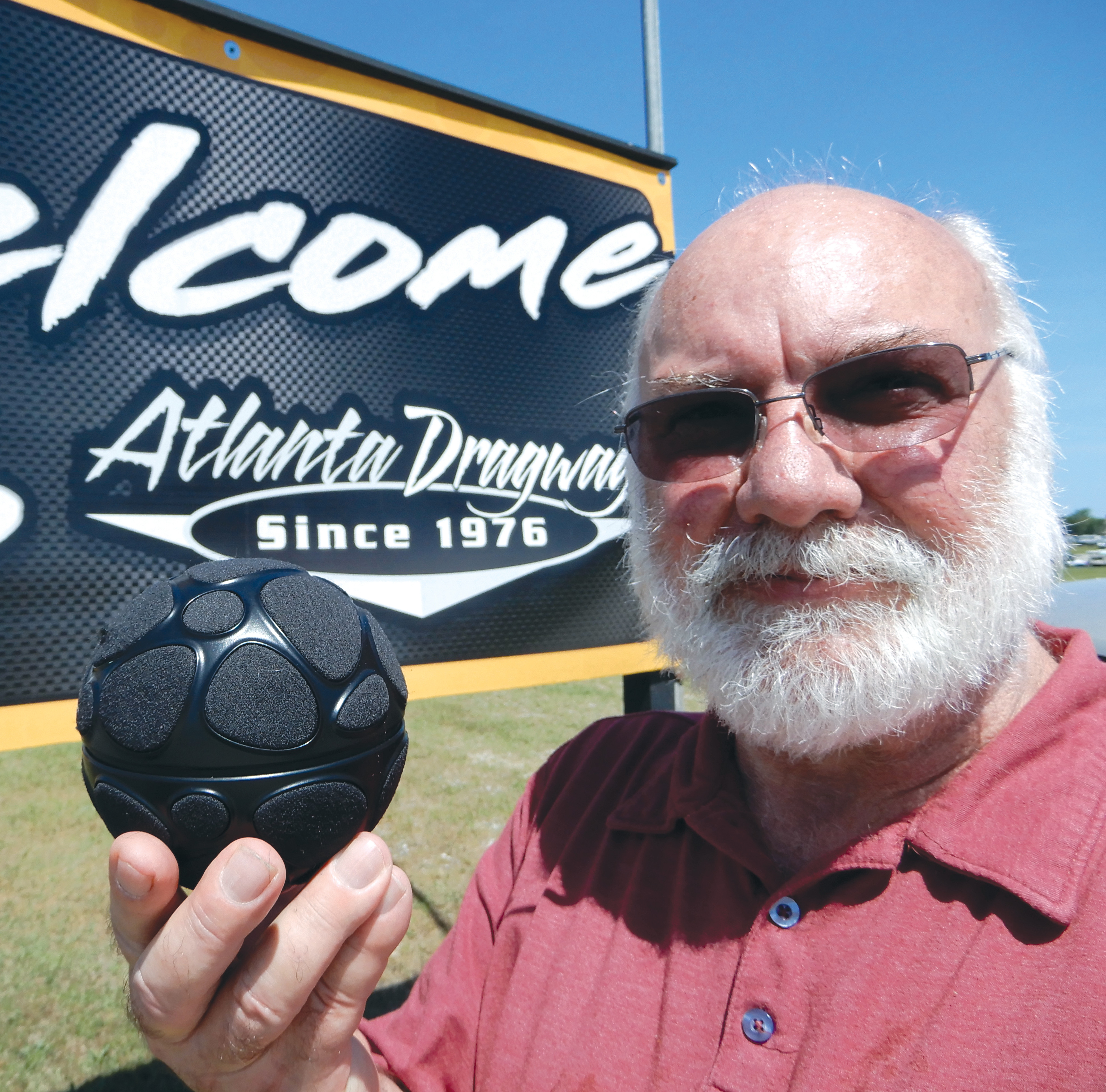Microphones and Beyond …
Sports production is moving forward with more 4K HDR productions, and there is an interest in improving the sound quality and advancing the standards for audio as well. For live entertainment and sports, improving the audio begins with sound capture. Live events are captured in real time using a variety of microphones placed on the sports apparatus, on the field of play, on cameras and around the venue.
Through the ’80s microphone selection and usage advanced beyond shotgun and lapel microphones because sound mixers began to have some influence over the microphones that the OB van carried from show to show. As sports productions got bigger many network-specified makes and models of microphones were based on the recommendation of the sound designer and mixers who worked on those shows.
INNOVATIVE APPLICATION
Microphones for sports have evolved through innovative application, advances in engineering and integration of different technologies. Innovative application is a natural progression—it begins by using and testing a variety of different microphone makes and models in unfamiliar and unintended applications. In 2004, I repurposed five high-quality Audio-Technica AT4050 vocal microphones and put them on the roof of the Olympic stadium in Athens. These microphones captured the explosions of the pyro-sound with great depth, clarity and believability, and surrounded the listener with the tone of the event. After this test, I used the AT4050 for atmosphere and ambience at every sporting venue until the stereo version AT4050ST replaced it (Fig. 1).

Over the last couple of decades, microphone technology seems to have advanced using different materials and construction. This has resulted in better quality with reduced costs, but looking forward, I expect next-generation sound should have some innovative microphone configurations and designs. I have seen several interesting prototype configurations that have promise, but in practice, next-generation microphones may require an open mind and deeper pockets.
To make a microphone selection, you must first analyze the components of the audio and how best to capture it. Sports capture is two separate but equal components: sports-specific and venue-specific (ambience and atmosphere) and each component generally requires different microphones and sound design.
Sports-specific sound capture and microphone selection could be as much about what sounds you want the microphone to capture and what sounds you want the microphone to reject. Passive off-axis sound rejection and filtering is the principle of removing certain off-axis frequencies from the on-axis sound. The interference tube impedes certain off-axis frequencies and attenuates them relative to on-axis frequencies making off-axis sounds perceptibly muted.
Familiar examples of these principles are the cardioid, super cardioid and shotgun microphone designs used to focus sound capture. Advanced concepts of focused capture have to do with forming capture areas, known as “beams” or “sweet spots,” from what are known as array and spherical microphones.
ARRAY MICROPHONES
Array microphones come in a variety of forms, but all share in the ability to adjust patterns and directivity as a result of computer modeling. An array microphone can technically be anything more than two capsules or like the Sennheiser Microphone Array prototype, which has 31 shotgun-type microphones. These microphones are oriented facing forward with all microphones aligned on a single horizontal plane (Fig. 2). Microphones can also be like the spherical Eigenmike array, which has microphone capsules mounted into a spherical form and captures sound from all directions (Fig. 3).

Array microphones are capable of beam forming, resulting in focused accumulation of sound through microphone modeling and computer manipulation. Beam forming is an active approach using multiple fixed microphone capsules and creates a variety of patterns or directions using the fixed capsules to optimize the capture of the desired objects such as the ball, the coach or the player. Not only does beam forming benefit from focused capture, but also rejection of unwanted off-axis sounds.
The Sennheiser Microphone Array is differentiated by its design to capture primarily 360 degrees, but only in a single horizontal axis. Sennheiser says that this type of array cluster can process up to four focused sound beams plus independently steer each beam’s focus. For example, the microphone can optimize the capture of the sound of the ball, the coach or any sound source in the horizontal sound space and output each beam separately. But this array cannot output an ambisonic soundfield because this array captures no discrete height information.
The size of this setup is cause for concern. The current Sennheiser prototype uses 31 short shotgun-type microphones and the form factor is large, but ultimately they expect the final product to be half the size while still using 31 directional microphones. An ambisonic approach attempts to capture and reproduce all dimensions and as much of the entire soundfield as possible.
An ambisonic microphone uses multiple closely spaced microphone capsules that work together to capture an ambisonic soundfield. As you add microphone capsules, the order of ambisonic increases along with additional amounts of detail: 1st Order—four capsules; 2nd Order—nine capsules; 3rd Order—16 capsules; and 4th Order—25 capsules or more.
A 3rd Order ambisonic microphone is available from Zylia and the well-known 4th Order MH Acoustics’ ambisonic Eigenmike array has become a reference standard for ambisonic capture and research. There clearly is a noticeable difference in the detail of the soundfield and better control of the beams as the ambisonic order increases.
A final benefit with beam-forming microphones is the ability to steer the microphone beam dynamically and in real time using positional information from video systems like ChyronHego’s sports tracking technology, which uses cameras to track objects on the field-of-play and creates positional information of where an athlete, ball, coaches or even a car is located.
One final thought: You do not need array microphones to track a sound or ambisonic microphones to create immersive sound, but these are tools to be considered for advanced audio production.
1st Order ambisonic microphones, such as the Sennheiser Ambio, are effective and economical packages that deliver a cohesive immersive sound bed. They are a small package with virtually imperceptible latency. Moreover, the price of these microphones allows for ambience and atmosphere capture from multiple capture zones. Multiple capture points deliver an acoustical representation of the venue space with on-axis presence and natural diffusion from the venue architecture.
Ultimately, chasing the sound of sports is a thankless job while beam tracking is a tool to support the innovative audio mixer. Novel microphone application and design are essential to advancing the art and science of sound and are the responsibility of both the users and the dreamers. The designers and manufacturers of audio equipment want good input and sound advice—and it is always a good time to participate.
Dennis Baxter has spent more than 35 years in live broadcasting contributing to hundreds of live events including nine Olympic Games. He is the author of “A Practical Guide to Television Sound Engineering,” and is working on a book about immersive sound practices and production. He can be reached atdbaxter@dennisbaxtersound.comor atwww.dennisbaxtersound.com.
Get the TV Tech Newsletter
The professional video industry's #1 source for news, trends and product and tech information. Sign up below.
Dennis Baxter has spent over 35 years in live broadcasting contributing to hundreds of live events including sound design for nine Olympic Games. He has earned multiple Emmy Awards and is the author of “A Practical Guide to Television Sound Engineering,” published in both English and Chinese. His current book about immersive sound practices and production will be available in 2022. He can be reached at dbaxter@dennisbaxtersound.com or at www.dennisbaxtersound.com.

